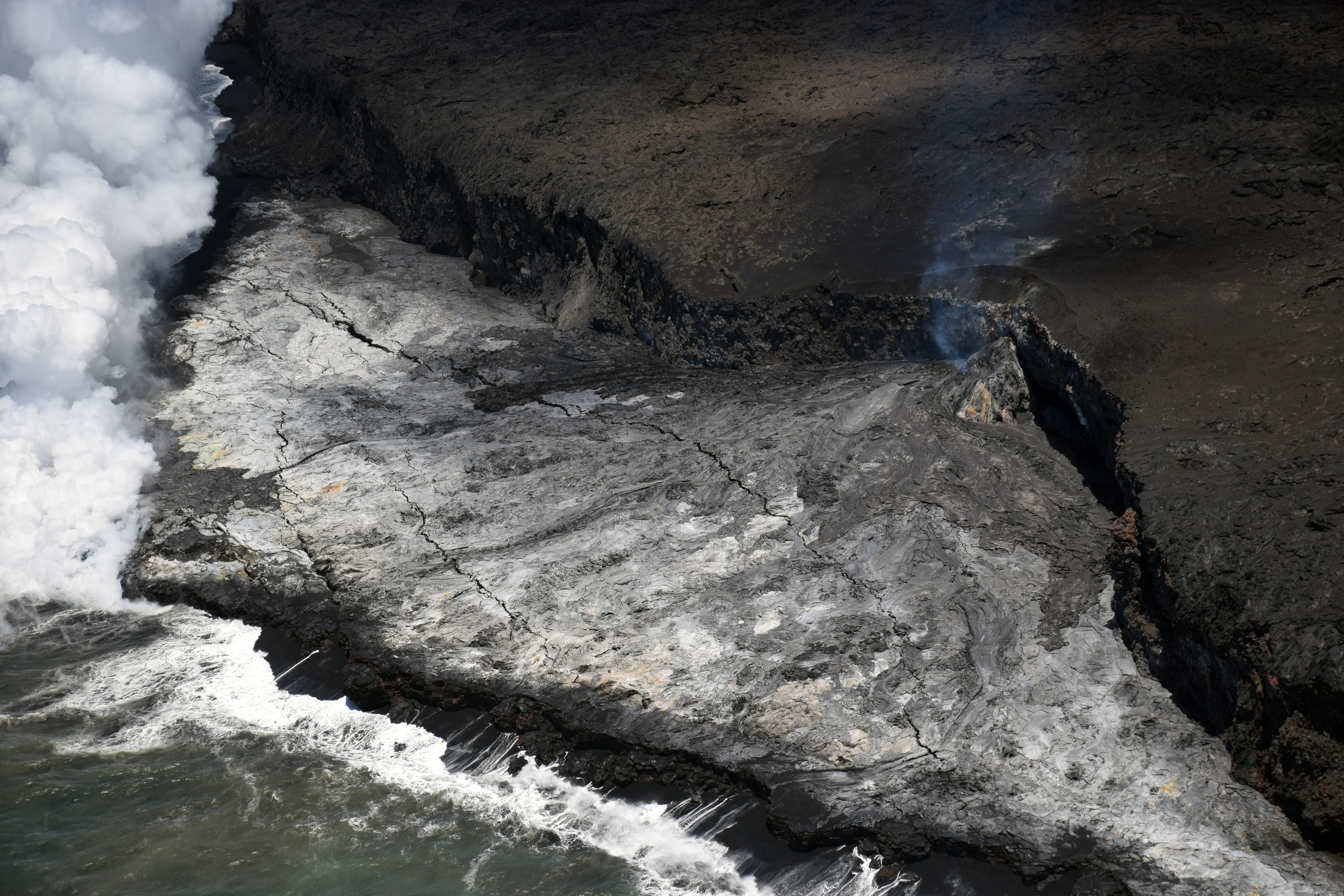Imagery Available: Coast Guard Kamokuna Lava Delta Safety Zone Update in vicinity of Kilauea lava flow into Pacific Ocean off Hawaii’s Big Island
U.S. Coast Guard sent this bulletin at 07/29/2017 02:45 AM EDT
| News Release |
July 28, 2017 |
Imagery Available: Coast Guard Kamokuna Lava Delta Safety Zone Update in vicinity of Kilauea lava flow into Pacific Ocean off Hawaii’s Big Island

Imagery courtesy of U.S. Geological Survey.
Editors Note: Click on images to download high resolution version.
HONOLULU — The Coast Guard continues to enforce the temporary Kamokuna Lava Delta Safety Zone for the navigable waters surrounding the Kilauea Volcano active lava flow entry into the Pacific Ocean on the southeast side of the Big Island, Hawai’i.
According to the U.S. Geologic Survey, several large cracks have developed in the lava delta, running parallel to the coastline and spanning the width of the delta. These cracks increase the likelihood of a large delta collapse.
“For mariners without prior limited entry approval, the safety zone encompases all waters extending 300 meters (984 feet) in all directions around the entry of the lava flow into the ocean and remains in effect,” said Lt. Cmdr. John Bannon, Coast Guard Sector Honolulu, waterways management lead. “All waterway users should be aware of this new delta formation, the potential for a significant collapse with little or no warning and the natural hazards associated with such an event.”
According to the Hawaii Volcano Observatory, large and dense fragments ejected during delta collapses can be thrown in all directions from the point of collapse, including out to sea. Based on a review of nearly 30 years of delta collapse and ejection distance observations in the Hawaii Volcano Observatory records, a radius of 300 meters was determined as a reasonable minimum high hazard zone around a point of ocean entry.
Enforcement of the safety zone began March 28. Lava delta growth and subsequent lava bench threat of collapse could cause an increase in hazardous conditions for mariners. The ocean entry hazards result in lava delta instability and fracturing from lava accumulation built on unconsolidated lava fragments and sand. This loose material can easily be eroded away by surf, causing the new land and existing sea cliff to become unsupported and slide explosively into the sea. Getting too close to the lava can result in serious injury or death.
As long as lava enters the ocean, further sea cliff degradation, delta construction and hazardous conditions relating to the collapse are likely to occur. These collapses occur with little to no warning and cannot be predicted. The Coast Guard took action to ensure public safety because of the aforementioned dangers.
The temporary Safety Zone is set to expire in September 28. Notification of any changes to the waterway safety zone enforcement will be provided to the public if the Safety Zone is changed or deactivated earlier than anticipated.
Furthermore, the Coast Guard promulgated a Notice of Proposed Rule Making to establish a permanent Safety Zone for this region. Feedback was solicited from the public on this rule making process. Comments were collected in docket number USCG-1017-0234 viewable in the Federal eRulemaking Portal at http://www.regulations.gov.
-USCG-

